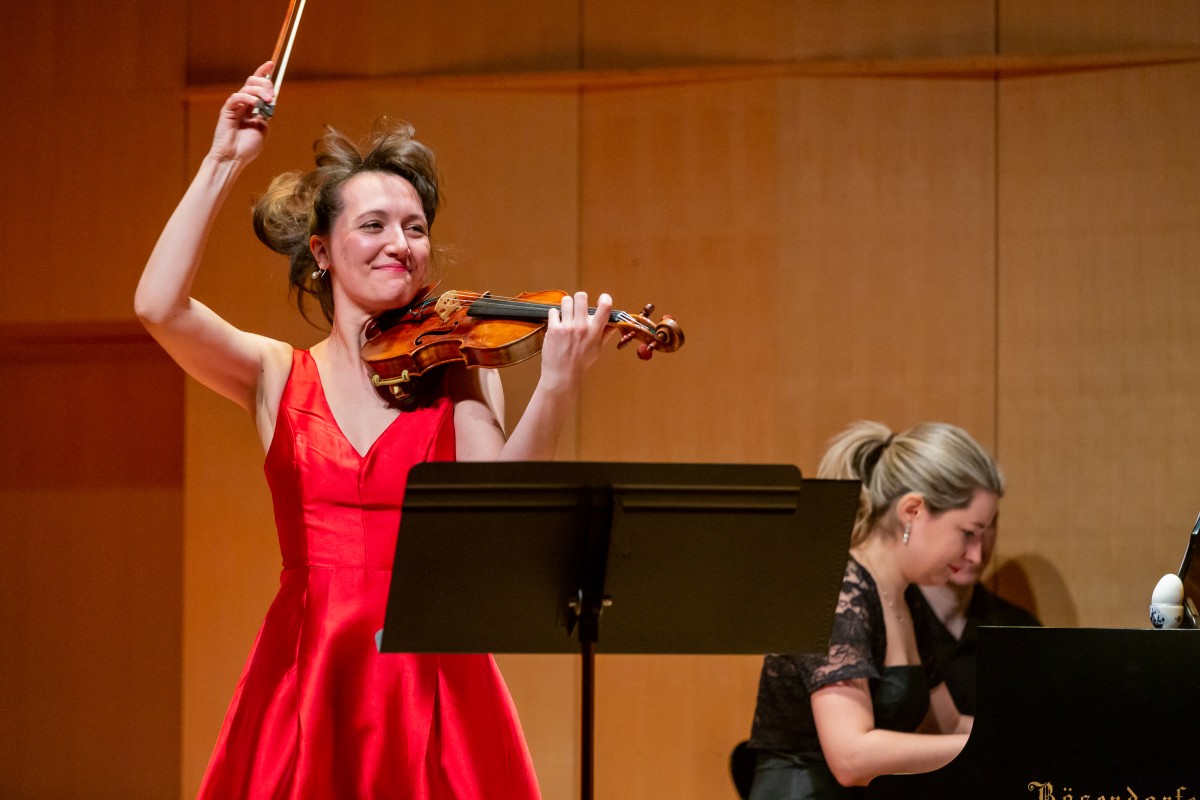Listening to the art
Can you describe a painting with music? Musicians from the Toronto Symphony Orchestra participate in AGO Virtual School sessions this month to do just that.

Albert Gleizes. L e Port (Marseille), 1912. Oil on canvas, Unframed: 90.2 × 116.5 cm. Gift from the Junior Women's Committee Fund, 1955. © ADAGP, Paris 2021 and SOCAN, Montreal, 2021.
Though two very different art forms, music and visual arts do overlap in their abilities to tell stories, creatively express emotions and mark a moment in time. Beginning May 3, musicians from the Toronto Symphony Orchestra (TSO) will lead students in a series of guided explorations of artworks from the AGO Collection through music. In anticipation of these sessions, we caught up with TSO violinist Yolanda Bruno to discuss her musical interpretation of the Cubist painting Le Port (Marseille), (1912) by Albert Gleizes and her beginnings as a musician.
AGOinsider: Can you tell us about the musical piece that you have chosen to perform?
Bruno: The music I will be performing is taken from Antonín Dvořák’s Symphony No. 9 in E Minor, a piece written two decades before the Gleizes painting was made. It is said Dvořák was feeling homesick while he was working in the United States. When I see the fractured painting by Albert Gleizes illustrating the port in Marseille, I imagine Dvořák sitting by a similar port in New York City, looking out at the sea, imagining home, feeling nostalgic for his hometown, Prague.
[soundcloud]AGOinsider: When did your love for music begin? When did you start playing the violin?
Bruno: I started violin at age five. At around 10, I realized there was something special about music. It happened one afternoon when I was looking after my brother who was a toddler, wailing away in his playpen. I grabbed my violin hoping music would distract him. I tossed off some folk tunes and soon he was laughing, dancing to the sounds of the music. It was a light bulb moment – music could bring happiness to even the grumpiest listener!
AGOinsider: What are the best qualities of playing the violin? What are the challenges?
Bruno: The best part of playing the violin is feeling the vibrations of the wood of the instrument resonate against your body as you play. The challenges – it can be tricky to hit all of the right notes!
AGOinsider: What excites you about explaining visual art through music?
Bruno: When I look at a piece of music – the printed score or manuscript – the black dots on the page tell a story. I feel the same way looking at a painting. Someone at some point in history took the time to put an idea/feeling/emotion/story on the page or canvas for us to appreciate. It is a privilege to be present for someone's story – with our eyes in visual art or with our ears in music.
Be sure to catch Yolanda Bruno and the other musicians from the TSO, as part of the AGO’s free live Virtual School Programs. For more details about these free live programs, stay tuned to AGOinsider.
Virtual School Programs
Virtual School Programs
Generous Support
Generous Support
Generous Assistance
Generous Assistance

